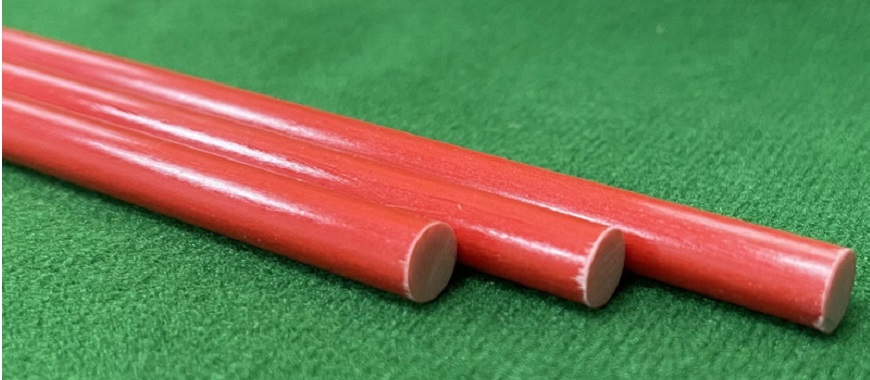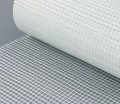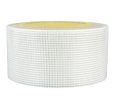
Choosing the right fly line for fiberglass rods is crucial to optimize their unique performance characteristics. Fiberglass rods, known for their slow action and flexibility, require specific lines that complement their design. Unlike faster graphite rods, fiberglass rods excel at delicate presentations and close-range accuracy. The choice of fly line for fiberglass rods significantly impacts casting ease, line control, and fishing enjoyment. When paired with a suitable line, these rods deliver a smooth casting experience that enhances angler satisfaction. Factors such as line weight, taper, and application should be considered carefully to match the rod’s inherent qualities. With the right fly line for fiberglass rods, anglers can achieve better performance across various fishing conditions and target species.
Key Considerations When Choosing a Fly Line for Fiberglass Rods
Fly Rod Weight and Line Matching
Importance of Matching Line Weight to Rod Weight
Matching line weight to rod weight is essential for optimizing casting performance. Fly lines for fiberglass rods must align with the rod’s designated weight to ensure balanced energy transfer. A mismatched line can disrupt the rod’s natural casting rhythm, reducing accuracy and distance. For fiberglass rods, which often have slower actions, using an appropriate line weight helps maintain smooth load and release during casting.
When properly matched, fly line for fiberglass rods deliver precise control and effortless presentation. This is especially important for beginners learning to feel the rod’s flex or experienced anglers seeking maximum performance. A correctly matched line ensures that the rod’s unique qualities, such as its forgiving action, are fully utilized.
Overlining Considerations for Fiberglass Rods
Overlining involves using a line one weight heavier than the rod’s designated rating. For fiberglass rods, overlining can be beneficial in specific situations. It helps to load the rod more quickly, making short-distance casts easier and improving accuracy for delicate presentations. This technique is particularly effective in small streams or areas with tight casting spaces where power and reach are less critical.
Overlining is not without drawbacks. It may reduce casting distance and alter the rod’s natural flex, potentially causing discomfort for anglers used to standard setups. However, for those targeting close-range fishing scenarios, it enhances the tactile feedback of fly lines for fiberglass rods.
Taper Types
Overview of Different Tapers
The taper of a fly line significantly influences its casting dynamics and presentation. Weight Forward (WF) tapers concentrate weight at the line’s front, aiding long-distance casting and handling wind. Double Taper (DT) lines distribute weight evenly across the length, allowing for precise control and roll casting. Both taper types have unique advantages when used with fiberglass rods.
For anglers who prioritize versatility, Weight Forward fly lines for fiberglass rods are excellent for casting heavier flies or in challenging conditions. Double Taper lines, however, shine in finesse fishing scenarios, offering delicate presentations ideal for trout streams. Understanding the specific advantages of each taper ensures the right choice based on fishing conditions.
Why Taper Choice Matters for Fiberglass Rods’ Slower Action
Fiberglass rods’ slower action makes taper selection even more critical. The gradual load and release of these rods pair well with Double Taper lines, which amplify their natural smoothness. Weight Forward lines, on the other hand, can complement fiberglass rods by enhancing distance when needed, balancing power and finesse.
By selecting the right taper, anglers can maximize the inherent advantages of fly lines for fiberglass rods, ensuring an enjoyable and productive fishing experience.
Fishing Scenarios
Target Species Like Bass or Trout and Their Influence on Line Selection
The type of fish targeted directly affects the choice of fly lines for fiberglass rods. For bass fishing, where power and larger flies are essential, heavier lines with aggressive tapers provide the necessary control. Trout fishing, in contrast, often requires delicate presentations in clear waters, making lighter lines with subtle tapers ideal.
Fiberglass rods are particularly suited for trout anglers due to their soft action and precision. The fly line must complement this by allowing gentle landings, minimizing disturbance to wary fish. For bass anglers, a stronger line ensures quick response and durability when casting heavier setups.
Water Conditions and Their Impact on Line Preferences
Water conditions, such as flow and depth, also play a role in selecting fly lines for fiberglass rods. Floating lines are preferred in shallow or calm waters, allowing easy fly manipulation on the surface. Sink-tip or full-sinking lines perform better in deeper, faster waters, helping deliver flies to the target depth.
Fiberglass rods, with their adaptable flex, excel in varying water conditions. When paired with appropriate fly lines for fiberglass rods, anglers can effectively navigate streams, lakes, or rivers, ensuring the best chance for success.
By understanding these factors—weight matching, taper types, and fishing scenarios—anglers can confidently choose the best fly lines for fiberglass rods. This tailored approach ensures that the unique qualities of fiberglass rods are enhanced, delivering an exceptional fishing experience.
Why the Best Fly Line for Fiberglass Fly Rod Matters
Advantages of Fiberglass Rods with Specific Fly Lines
Flexibility and Casting
Fiberglass rods are renowned for their exceptional flexibility, which makes them ideal for delicate presentations. Unlike faster rods, their slow action allows for a controlled, smooth casting experience, especially at short to medium distances. When paired with the right fly line for fiberglass rods, this flexibility is further enhanced, ensuring precise placement and minimal disturbance in the water.
Fly line for fiberglass rods are specifically designed to complement the rod’s natural bend. Their ability to load gradually during the casting motion maximizes the rod’s potential. This makes fiberglass rods particularly suitable for scenarios requiring subtle fly presentations, such as targeting trout in clear, shallow streams. Moreover, the pairing ensures smoother energy transfer, which reduces the effort needed for repetitive casting.
The combination of flexibility and compatible fly lines offers an advantage for those fishing in tight spaces or making roll casts. In these conditions, fiberglass rods shine due to their forgiving nature and ability to cast effectively without extensive backcasting room. With the right line, anglers can achieve an unmatched blend of precision and grace in their casts.
Forgiveness and Versatility
One of the key advantages of fly lines for fiberglass rods is the added forgiveness they provide during casting. The slow action of fiberglass rods allows anglers to feel the rod load and unload, making it easier to correct casting errors. This is especially beneficial for beginners learning proper casting techniques and for experienced anglers working in challenging conditions.
Fly lines paired with fiberglass rods also offer versatility, catering to diverse fishing styles and scenarios. Whether fishing for bass with heavy flies or presenting dry flies delicately to trout, the right line ensures optimal performance. The forgiving nature of fiberglass rods minimizes the impact of abrupt movements or casting inconsistencies, allowing anglers to maintain control and accuracy.
Additionally, this setup is ideal for anglers transitioning between different fishing environments. Fly line for fiberglass rods adapt well to varying conditions, from small streams to expansive lakes. This adaptability means that anglers can confidently switch techniques without compromising on performance, making fiberglass rods a reliable choice for a wide range of fishing adventures.
Why Choose GangLong Fiberglass for Your Fly Line Needs?
At GangLong Fiberglass, we specialize in crafting rods designed to enhance your fishing experience with the perfect fly line pairing. Our commitment to innovation ensures that each rod delivers flexibility, forgiveness, and unparalleled casting performance. With our expertise, you can trust that your setup will excel in any fishing scenario. Whether you’re a seasoned angler or just starting, GangLong Fiberglass has the solutions to elevate your fishing journey.
Affordable fiberglass fly rods: top features and benefits
Maintenance and Care of Fly Line for Fiberglass Rods
Importance of Maintaining Fly Lines for Fiberglass Rods
Proper maintenance of fly line for fiberglass rods is essential for extending their durability and optimizing performance. These lines endure constant exposure to water, dirt, and UV rays, all of which can compromise their quality over time. Neglecting maintenance can lead to cracks, stiffness, and reduced casting efficiency, ultimately diminishing the performance of your setup.
When fly lines for fiberglass rods are well-maintained, they retain their flexibility and ensure smooth casting. Regular care helps preserve the line’s coating, which is crucial for reducing friction through rod guides. A well-kept fly line also enhances the natural loading of fiberglass rods, ensuring consistent and accurate presentations. By prioritizing maintenance, anglers protect their investment and maximize their time on the water.
Tips for Cleaning Fly Lines After Use
Cleaning fly lines for fiberglass rods after every fishing trip is a simple yet impactful step. Begin by rinsing the line with lukewarm water to remove dirt, debris, and salt. For a deeper clean, use a gentle soap solution and a soft cloth to wipe the line. Avoid harsh detergents, as they can damage the line’s protective coating.
After cleaning, dry the fly line thoroughly with a lint-free cloth to prevent mildew or deterioration. Inspect the line for any cracks or signs of wear that could affect performance. Cleaning ensures the line remains smooth, which reduces drag during casting and enhances the performance of fiberglass rods.
Proper Storage of Fly Lines
Proper storage of fly lines for fiberglass rods is crucial for maintaining their quality. Always store lines loosely coiled in a cool, dry place away from direct sunlight. Avoid tightly wrapping lines, as this can cause permanent kinks or memory, which affects their performance.
Using a line spool or storage reel prevents tangling and keeps the line in top condition. Before storing for extended periods, ensure the line is clean and completely dry to avoid mold or decay. Proper storage practices help preserve the integrity of fly lines, ensuring they continue to complement the unique qualities of fiberglass rods.
Why Choose GangLong Fiberglass for Expert Guidance?
At GangLong Fiberglass, we emphasize the importance of caring for your fishing gear, including fly lines for fiberglass rods. With our expert guidance and dedication to quality, we help anglers maintain their equipment for peak performance. Whether you’re looking for tips or reliable rod solutions, GangLong Fiberglass is your trusted partner for an exceptional fishing experience.
Fiberglass Fly Rod for Streamers: A Comprehensive Guide
Finding the Perfect Fly Line for Fiberglass Rods
Summary of Key Considerations
Selecting the ideal fly line for fiberglass rods requires understanding how different factors affect your fishing experience. Fiberglass rods are unique for their slower action and flexibility, which pair well with specific fly lines. Line weight, taper design, and intended use all play crucial roles in achieving optimal casting performance and control. By considering these aspects, anglers can ensure that their fly lines for fiberglass rods complement their equipment and fishing style perfectly.
Fiberglass rods shine in close-range and delicate casting situations. The right fly line enhances these strengths by ensuring smooth loading and energy transfer. Each line has specific characteristics that suit particular fishing scenarios, such as trout in clear waters or bass in dense cover. Recognizing these considerations helps make informed choices that maximize both the rod’s potential and overall enjoyment.
Emphasis on Personal Preference
While technical factors are essential, personal preference plays an equally important role in choosing fly lines for fiberglass rods. Anglers’ casting styles, target species, and typical fishing environments influence their ideal setup. For instance, those who prefer finesse presentations may lean toward lighter lines with subtle tapers, while others targeting bass might choose heavier lines with aggressive tapers.
Experimentation is key to finding the perfect match. By trying different fly lines for fiberglass rods, anglers can identify the combination that best aligns with their unique approach to fishing. Personal comfort and confidence in a setup often translate to better performance on the water.
Encouragement to Experiment
Fly lines for fiberglass rods offer endless possibilities for customization and optimization. Anglers should not hesitate to explore various combinations to discover what works best for them. Testing different line weights, tapers, and materials under varying conditions provides valuable insights into how each choice impacts casting, control, and presentation.
At GangLong Fiberglass, we encourage anglers to embrace experimentation. Our fiberglass rods are designed to pair seamlessly with diverse fly lines, ensuring adaptability to any fishing scenario. Whether you’re a beginner or a seasoned pro, GangLong Fiberglass empowers you to find the setup that elevates your fishing experience. With the right fly line for fiberglass rods, the possibilities are endless.
FAQs about Fly Line for Fiberglass Rods
Choosing the right fly line depends on the rod’s weight, taper preferences, and intended fishing conditions. First, match the fly line weight to the weight rating of your fiberglass rod. This ensures the line complements the rod’s action and enhances casting performance. Consider taper types—Weight Forward tapers are great for distance and wind, while Double Tapers work well for finesse presentations. Think about your target species and fishing environments. For example, heavier lines might be better for bass in dense cover, while lighter lines suit trout fishing in clear streams. Experimenting with different fly lines can also help determine what feels most comfortable for your casting style. By taking these factors into account, you can find a line that maximizes your fishing experience.
Fiberglass fly rods are best suited for situations requiring delicate presentations and close-range casting. They excel in small streams or rivers where accuracy and subtlety are crucial. These rods are ideal for anglers targeting species like trout, where a soft touch is necessary to avoid spooking the fish. Fiberglass rods are also forgiving, making them perfect for beginners learning to cast or for anglers fishing in tight spaces. Their durability makes them reliable for rougher conditions, such as brushy areas or when handling larger, feisty fish. Overall, fiberglass rods are a versatile choice for anglers who value control and smooth casting over long distances.
Fiberglass fly rods are often shorter to improve maneuverability and accuracy in confined spaces. Shorter lengths allow anglers to cast effectively in small streams, dense forests, or areas with limited backcasting room. The shorter design also enhances the rod’s ability to perform roll casts, a technique often used in tight quarters. Additionally, the compact size provides better control for close-range presentations, making them ideal for targeting fish in narrow waters. Despite their shorter length, fiberglass rods maintain excellent flexibility and casting performance. This makes them a popular choice for anglers who prioritize precision over distance.
Fiberglass rods are sensitive enough to detect subtle bites and changes in line tension. Their flexibility allows anglers to feel the rod load and unload during casting, improving control and accuracy. While fiberglass rods may not match the sensitivity of graphite rods, they excel in transmitting feedback during slow, deliberate movements. This makes them ideal for fishing techniques requiring finesse, such as dry fly fishing or nymphing. Anglers using fiberglass rods can enjoy a tactile connection to their line and lure, enhancing the overall fishing experience. For those who value the ability to feel every action, fiberglass rods provide a reliable and responsive option.

As the editor of GangLong Fiberglass, I have years of experience and in-depth research, focusing on cable tray products, fiberglass solutions, and grille systems. I incorporate years of industry insights and practical experience into every content, committed to promoting the progress of the industry. At GangLong Fiberglass, my commitment is reflected in every product, from innovative cable trays to durable fiberglass solutions and sturdy grille systems. As an authoritative voice in the industry, my goal is to provide valuable information to professionals and businesses and promote forward-looking solutions.


